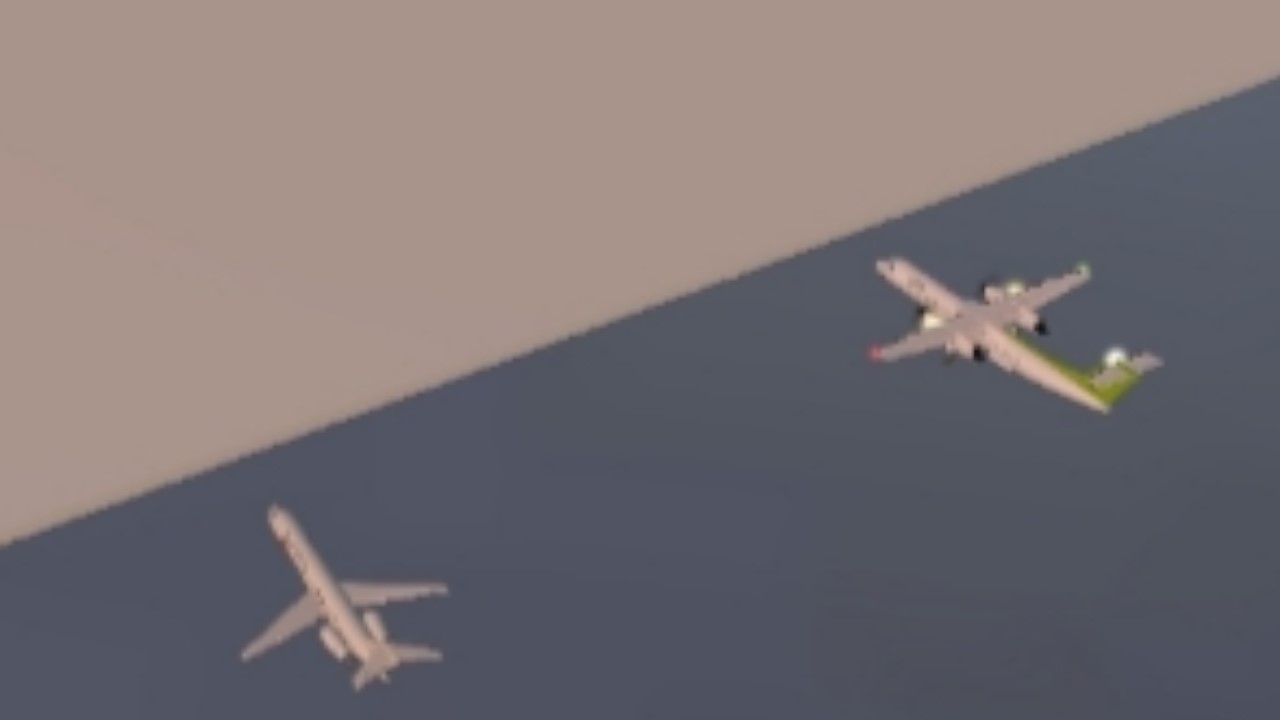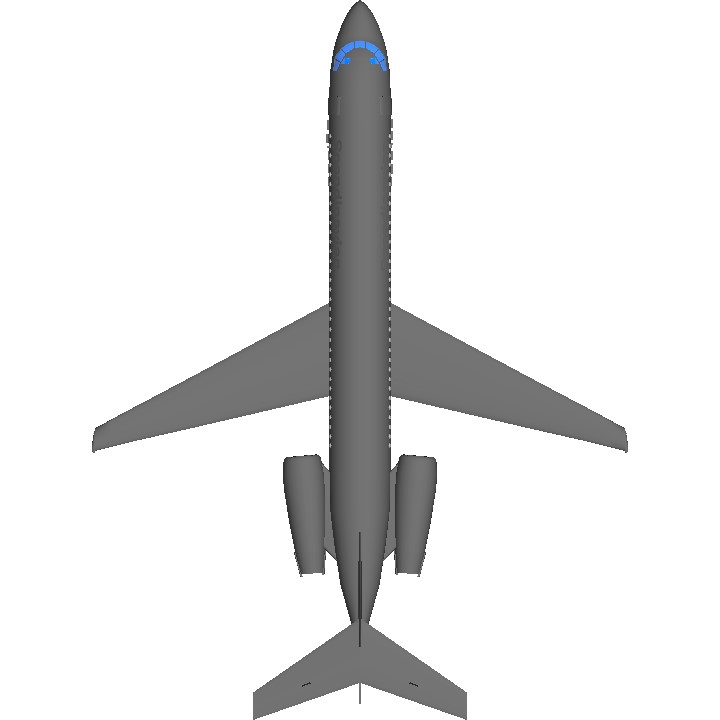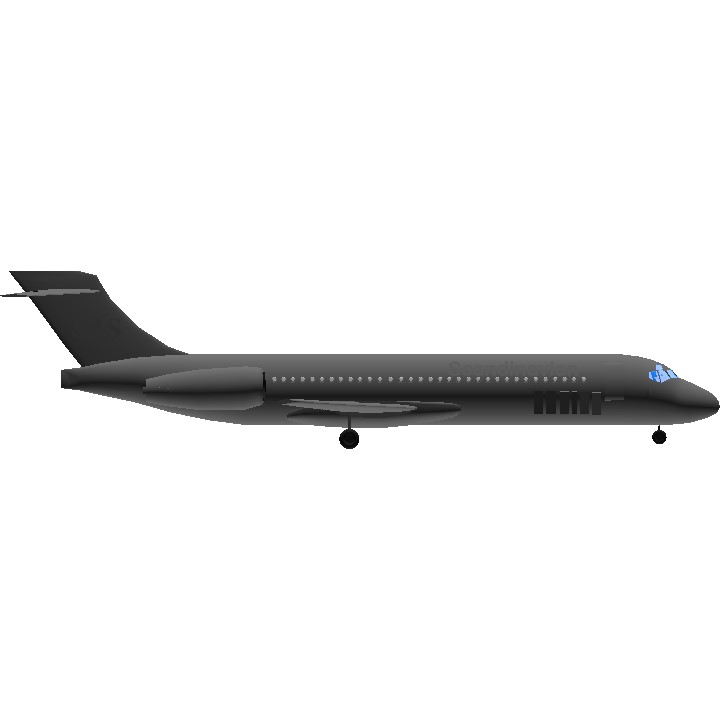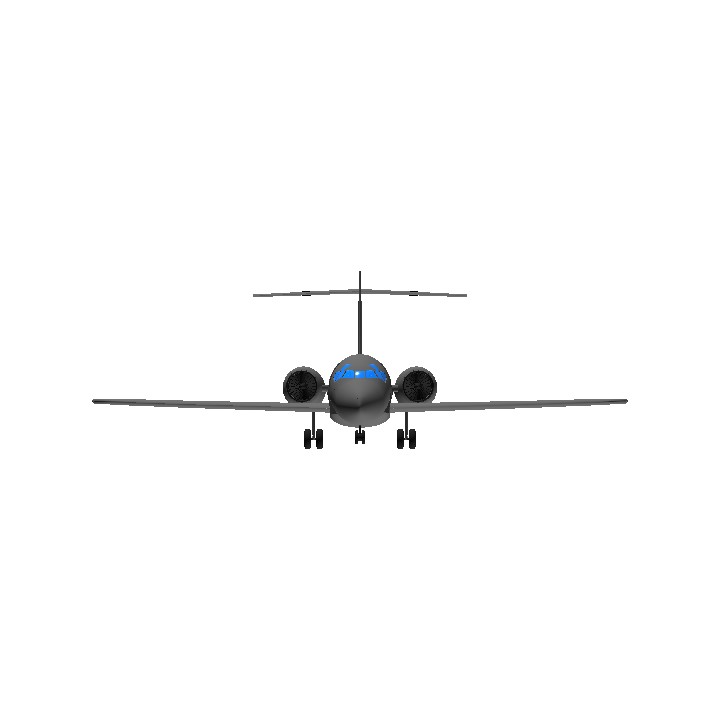Controls:
AG-1: Landing Light
AG-2: Engines
AG-3 + Brake: Reverse Thrust
AG-4: Navigation Light
AG-5 + Brake: Airbrakes
AG-7 Cabin Lights
VTOL - down: Flaps
Trim - Trim
Roll - Nose Gear Steering
About Dc-9
The DC-9 is powered by two rear-mounted Pratt & Whitney JT8D low-bypass turbofan engines under a T-tail for a cleaner wing aerodynamic. It has a two-person flight deck and built-in airstairs to better suit smaller airports. The Series 10 aircraft are 104 ft (32 m) long for typically 90 coach seats. The Series 30, stretched by 15 ft (4.5 m) to seat 115 in economy, has a larger wing and more powerful engines for a higher maximum takeoff weight (MTOW); it first flew in August 1966 and entered service in February 1967. The Series 20 has the Series 10 fuselage, more powerful engines, and the Series 30's improved wings; it first flew in September 1968 and entered service in January 1969. The Series 40 was further lengthened by 6 ft (2 m) for 125 passengers, and the final DC-9-50 series first flew in 1974, stretched again by 8 ft (2.5 m) for 135 passengers. When deliveries ended in October 1982, 976 had been built. Smaller variants competed with the BAC One-Eleven, Fokker F28, and Sud Aviation Caravelle, and larger ones with the original Boeing 737.
The original DC-9 was followed by the second generation in 1980, the MD-80 series, a lengthened DC-9-50 with a larger wing and a higher MTOW. This was further developed into the third generation, the MD-90, in the early 1990s, as the body was stretched again, fitted with V2500 high-bypass turbofans, and an updated flight deck. The shorter and final version, the MD-95, was renamed the Boeing 717 after McDonnell Douglas's merger with Boeing in 1997; it is powered by Rolls-Royce BR715 engines. The DC-9 family was produced between 1965 and 2006 with a total delivery of 2441 units: 976 DC-9s, 1191 MD-80s, 116 MD-90s, and 155 Boeing 717s. As of August 2022, 250 aircraft remain in service: 31 DC-9s (freighter), 116 MD-80s (mainly freighter), and 103 Boeing 717s (passenger), while the MD-90 was retired without freighter conversion.
The McDonnell Douglas DC-9 is an American five-abreast, single-aisle aircraft designed by the Douglas Aircraft Company. It was initially produced as the Douglas DC-9 prior to August 1967, after which point the company had merged with McDonnell Aircraft to become McDonnell Douglas. Following the introduction of its first jetliner, the high capacity DC-8, in 1959, Douglas was interested in producing an aircraft suited to smaller routes. As early as 1958, design studies were conducted; approval for the DC-9, a smaller all-new jetliner, came on April 8, 1963. The DC-9-10 first flew on February 25, 1965, and gained its type certificate on November 23, to enter service with Delta Air Lines on December 8.
About Scandinavian airlines system (old name)
In 2017, SAS carried 28.6 million passengers, achieving revenues of 40 billion Swedish kronor.[9] This makes it the eighth-largest airline in Europe and the largest in Denmark and Sweden. The SAS fleet is composed of 124 aircraft consisting of Airbus A319, Airbus A320, Airbus A320neo, Airbus A321LR, Airbus A330, Airbus A350 and Embraer 195 aircraft.[6] SAS also wet leases Airbus A320neo, ATR 72, and Bombardier CRJ900 aircraft.[10]
The airline was founded in 1946 as a consortium to pool the transatlantic operations of Swedish airline Svensk Interkontinental Lufttrafik, Norway's Det Norske Luftfartselskap and Det Danske Luftfartselskab of Denmark. The consortium was extended to cover European and domestic cooperation two years later. In 1951, all the airlines were merged to create SAS. SAS has been described as "an icon of Norwegian–Swedish–Danish cooperation".[11] In 1997, SAS co-founded Star Alliance, the first of the three major airline alliances, alongside United Airlines, Air Canada, Lufthansa and Thai Airways International.[12] On 27 June 2018, the Norwegian government announced that it had sold all its shares in SAS.[13][14]
In October 2023, it was announced that Air France-KLM, the Danish government and two financial firms would be investing in SAS, with Air France-KLM taking 19.9% stake. If approved, SAS would leave Star Alliance and join SkyTeam.[15][16]
Specifications
Spotlights
- VietnamAirlinesFlight474 4 months ago
General Characteristics
- Predecessor XJ-90
- Created On Android
- Wingspan 95.8ft (29.2m)
- Length 128.6ft (39.2m)
- Height 31.8ft (9.7m)
- Empty Weight N/A
- Loaded Weight 41,824lbs (18,971kg)
Performance
- Power/Weight Ratio 1.37
- Wing Loading 28.4lbs/ft2 (138.5kg/m2)
- Wing Area 1,474.0ft2 (136.9m2)
- Drag Points 10852
Parts
- Number of Parts 280
- Control Surfaces 5
- Performance Cost 1,608





